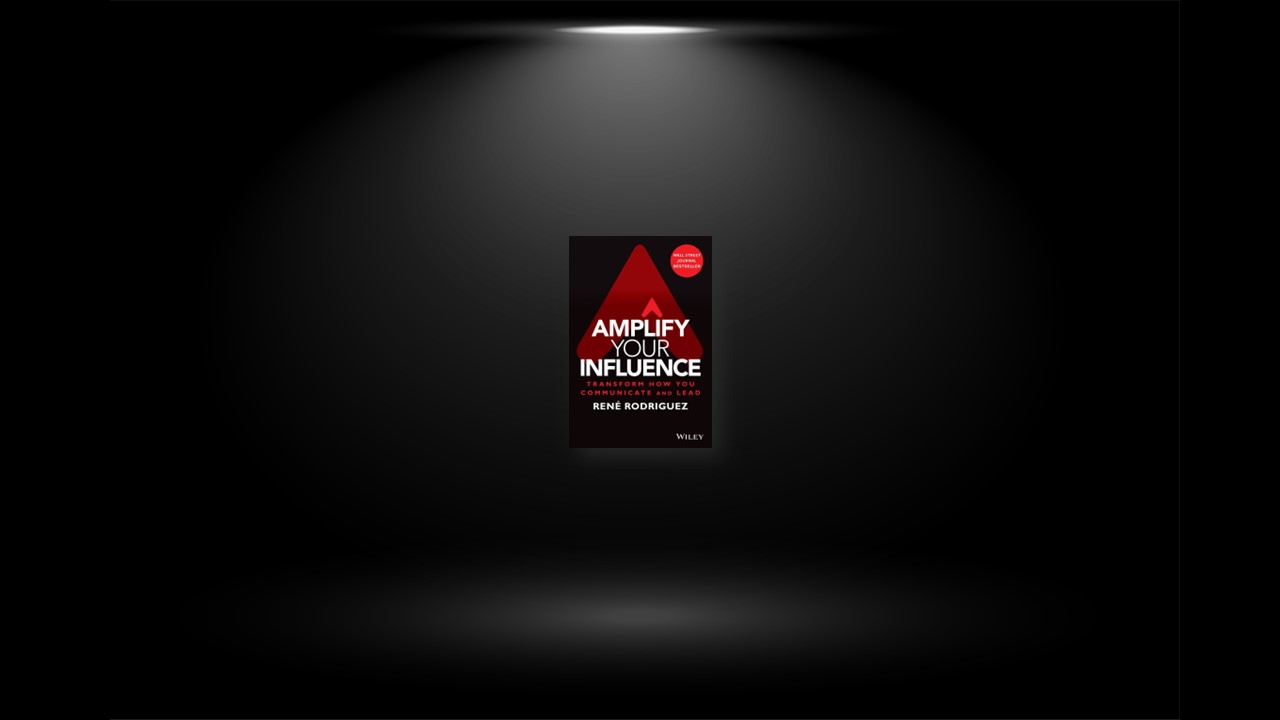The Power of Influence
Influence is not something that’s learned overnight. It’s an art that requires many skills and takes practice to master. Influence also is about personal significance and purpose—the impact each of us has or doesn’t have on others and the world around us.
The various influence skills and techniques each serve a different purpose and are tools in your life toolbox. Become a student of your own experiences. If you meet someone and like them, figure out why. It’s the same if you don’t like someone. You’ll be surprised at how much your experiences can teach you.
Emotional intelligence is a cornerstone of influence, and self-awareness is at its center. Too often we skip over how a message was formulated—the sequence of steps we went through to develop a message. Selling an idea, product, or service or convincing an audience of the efficacy of a new approach requires us to step-by-step lay out the details and then deliver the message.
Our brains need a frame of reference to act. Framing is how we understand the structure of reality. Resistance is part of the human experience. We must learn to understand why people resist change and learn to influence a desired behavior.
The Hidden Drivers of Influence
Aristotle offered two now often forgotten emotional appeals. Kairos is about relevance and taking advantage of the right moment to deliver a message. Telos is the end game, the purpose, the essential aim of a speech, a sales pitch, or a presentation. It’s the point you hope to convey to your audience.
The brain’s reticular activating system is responsible for filtering through the clutter that bombards all of us. Therefore, as communicators and influencers we must learn to appeal to someone’s RAS to gain their attention and to influence an outcome. Stories do that.
The best leaders are teachers, mentors, and role models—and they accomplish the majority of their work through influence, not authority.
Sequence Is EVERYTHING
Before delivering any message, we must be in tune with the emotions of our audience. Think ahead of time how an audience might respond to a message. Our brains process information in certain sequences. The goal is to align our messages to work with our audience’s brains rather than against them, allowing for faster acceptance.
The four elements an audience considers when it comes to influence include: Am I safe? Do you care? Is this inspiring? Is this engaging? Your message should consider the sequence and culture of an intended audience.
The brain responds to psychological threats the same way as it does to physical ones; it shuts down. Your audience must feel psychologically safe because without that security, influence doesn’t happen. Structure, order, and predictability create that safety and security.
Self‐Awareness and Discovery
Internal self-awareness is how we see ourselves in relation to our values, emotions, strengths, weaknesses, and environment. External self-awareness expresses how others see us in relation to our values, emotions, strengths, weaknesses, and environment. This is key to the skill of influence because it enables you to see yourself as others do.
We need to learn how to be gracious and grateful (yes, men can be graceful, too), confident and poised, willing to step up and out to deliver our messages, and be approachable afterward. Practice doesn’t make perfect. Perfect practice does. That’s why athletes—business leaders, too—have coaches to ensure that they practice perfectly.
Journaling is an excellent form of self-reflection that can teach us about ourselves and help us become better at what we do. Self-awareness is an important part of emotional intelligence. Conscious awareness helps us align our messages, decisions, and behaviors around our values.
Frames: Window into Your World
Frames are constructs of reality that provide psychological context to help us understand our world. The more common term is frame of reference.
The battle for attention, influence, and even financial resources is a matter of whose frame is perceived as the most credible, compelling, and valuable. Because framing is a collection of concepts, metaphors, and theoretical references that together help us understand reality, story becomes a powerful device to control the narrative.
Our perceptions of political parties, different ethnicities, the opposite sex, new technology, or a change in strategic direction are all affected by the frames through which we view them. Don’t just push out data. Frame it. Help the audience understand the data and the message and why it has value for them.
Do not make up or lie about a story or frame. It’s unethical, wrong, and destroys your ethos and the ability to earn trust. Your origin story is a powerful frame. It answers two questions—how you arrived at where you are today and why you love serving the customers you serve.
Body Language and Presence
People make snap judgments based on first impressions. That’s why body language is central to the influence tool set. Nonverbal clues such as tone of voice, eye contact, inflection, and how close we stand to someone are cues that convey specific messages and affect our influence.
Look for clusters of nonverbal cues before making a judgment. The eyes are windows into what we communicate. In today’s virtual and hybrid world we must consider our digital body language and how we communicate through a small screen.
Self-awareness plays a big role in nonverbal communication. We must learn to pay attention to movements, gestures, and all the things that normally seem unimportant such as changing behaviors and slight voice changes, facial expressions, and even the direction someone’s feet point. These are giveaways to the message that’s trying to be sent, and more importantly, the meaning behind the message.
With video you can watch not only how you move initially but also how you respond to various cues and other things you might never catch through your own self-awareness. Real presence comes from an unshakable belief in ourselves. That confidence appears effortless and natural because it is.
Interpersonal Communication
Communication is tough, especially when we are under stress. No matter how good a communicator we think we are, the reality is we are ineffective at communication. Interpersonal communication has filters; your personal filter is the way you see, engage with, and understand the world around you and inside you.
A considerable degree of miscommunication is caused by misinterpreting the intended needs of people. People want to feel that they have been heard. That can only be determined by them, not us. The best leaders, managers, parents, sales professionals, and conversationalists do the same thing in conversation. They LOVE—an acronym for listen, observe, validate, and expand.
Bombarding people with lots of information in the hopes that some of it may get them to like us more results in a boring, one-sided conversation that never amounts to anything. When that happens in any persuasive or influence scenario, people notice it, raise their natural resistance, and make connection even more difficult.
Well-chosen language, spoken in the right manner and with congruent body language, can touch the heart and soul, find common ground, tear down walls of division, foster powerful new relationships, and move people to action.


